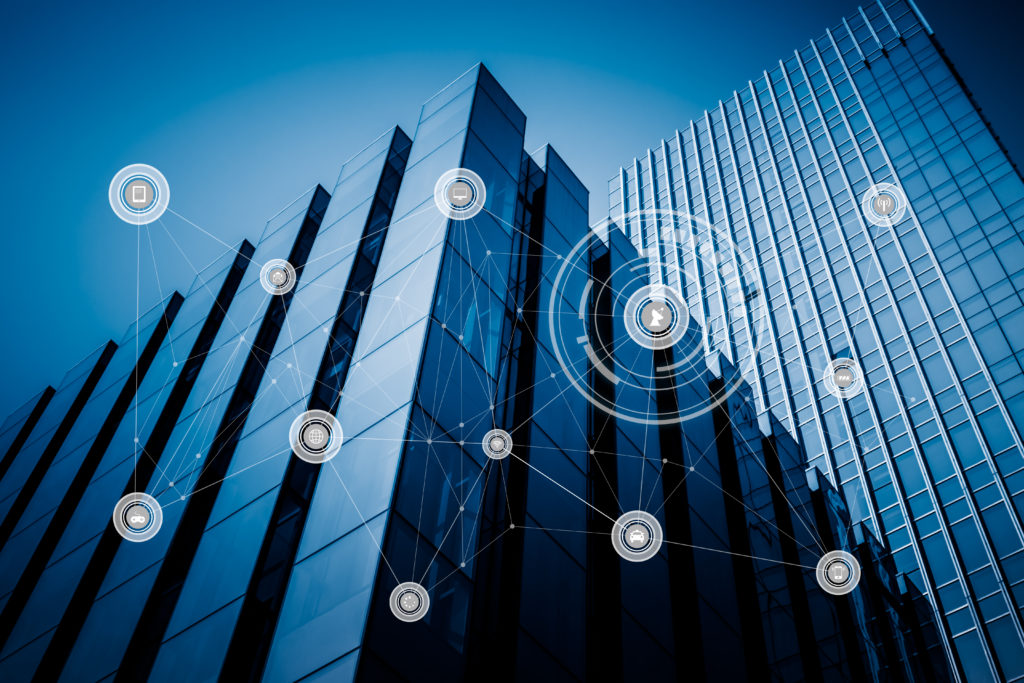With today’s technology that seems to be evolving at the speed of light, combined with new generations of younger employees, diverse and differing business models, and marketing competition that is ever changing, how can a commercial real estate building not just stay afloat, but actually thrive in this age of continuous change? Whether you are just acquiring your first commercial building, or you are a true veteran in the industry, there’s no denying that there are some new challenges that are headed your way, in order for your building to remain relevant.
Technology changes at such a rapid pace that is nearly impossible to predict or plan for the next big innovation or revolution in technology. However, the physical structure of a commercial building — the steel, the glass, the brick and mortar — are on entirely different schedules of the time. While those in technology talk about timelines in terms of months or even years, those in commercial construction talk about timelines in terms of decades.
In other words, given the rate of change we’ve already seen with technology, there is no way to predict what types of smart building capabilities that will be available to commercial tenants in the next 10 to 20 years. And while we simply can’t plan for the unknown, savvy CRE owners are doing all that they can to try to prepare for future — today. With this in mind, we put together a list of 3 ways to help future-proof your commercial real estate building in 2019. Read on to find out more.
Understanding your existing assets
In today’s technology-driven world, the devices that are “not connected” are few and far between. There are hundreds of IoT (Internet of Things) sensors, linking all of these connected devices throughout your building. And yet, it is likely that you still regularly field questions from your building manager or portfolio managers such as, “How do I access this power data?” or “How do I find the temperature data?”
And while this is great, it’s important to ask yourself the question of if you have all of these sensors connected to your devices, what problems would you like to solve? Are you looking for better billing data for your tenants? Better benchmarking and equipment performance? Faster response to any problems that may arise in your building’s equipment?
Networking
The answers to these questions will not only tell you the types of solutions that you want, it will also help to define the infrastructure of the networking within your building. And depending on the types of sensors you have in place, the frequency at which you receive your data will differ — which also tell you how you should set up your building’s networking.
For instance, if you are trying to capture a crucial piece of equipment that is central in the health or safety of your building or its occupants, you will want to be sure that you have a very fast connection that is encrypted, whether that is through WiFi or ethernet. Conversely, if your’e trying to measure incremental data, such as leak detection or temperature data, these sensors send updates far less frequently, and you will need to ensure that your networking infrastructure supports this (typically with a sub-gigahertz connection).
Integrating your systems
Finally, you need to make sure that all of your systems are integrated or know how to speak to each other. Make sure the context of your data is easy to understand — think about it: no one would want to read a sensor from its serial number. Rather, it’s easier to be able to look and quickly determine that a specific sensor is located on a certain floor even in a certain room.
The lifespan of your data is also important. Of course, it’s important that you have “real time” access to your data, so that you can be informed of any problems that may arise as soon as possible, but it’s also important that you store as much of your data as possible — and for as far back as possible. You never know when you will need to look something up or have access to data that is older, to help you better understand a current problem.
It is critical that your data be backed up securely and in a cloud-based system. Security is always important, so your data needs to be encrypted, to help protect your sensitive information. And a cloud-based environment will allow you to benchmark your data across a number of buildings, and access the data from anywhere in the world.






